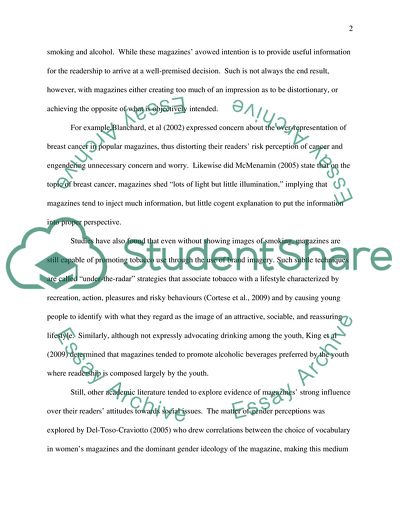Cite this document
(Evolution of Magazines in Contemporary World Essay - 1, n.d.)
Evolution of Magazines in Contemporary World Essay - 1. https://studentshare.org/journalism-communication/1735223-the-review-essay-will-investigate-the-range-of-literature-available-of-relevance-to-the-study-of-a-particular-media-or-cultural-industry-you-will-review-the-literature-about-magazines
Evolution of Magazines in Contemporary World Essay - 1. https://studentshare.org/journalism-communication/1735223-the-review-essay-will-investigate-the-range-of-literature-available-of-relevance-to-the-study-of-a-particular-media-or-cultural-industry-you-will-review-the-literature-about-magazines
(Evolution of Magazines in Contemporary World Essay - 1)
Evolution of Magazines in Contemporary World Essay - 1. https://studentshare.org/journalism-communication/1735223-the-review-essay-will-investigate-the-range-of-literature-available-of-relevance-to-the-study-of-a-particular-media-or-cultural-industry-you-will-review-the-literature-about-magazines.
Evolution of Magazines in Contemporary World Essay - 1. https://studentshare.org/journalism-communication/1735223-the-review-essay-will-investigate-the-range-of-literature-available-of-relevance-to-the-study-of-a-particular-media-or-cultural-industry-you-will-review-the-literature-about-magazines.
“Evolution of Magazines in Contemporary World Essay - 1”. https://studentshare.org/journalism-communication/1735223-the-review-essay-will-investigate-the-range-of-literature-available-of-relevance-to-the-study-of-a-particular-media-or-cultural-industry-you-will-review-the-literature-about-magazines.


